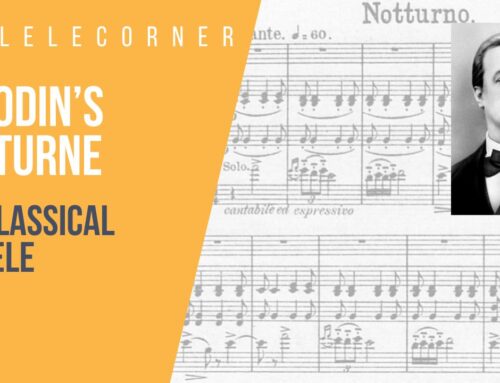How to play by ear
Being able to use your ear when you play is an essential part of learning the ukulele. You will be able to recognize melodies, chords progressions, strumming patterns, and much more. Many budding musicians start by listening to recordings and attempting to play along. I did this when I was learning for years before studying with teachers and am so happy that I did. I used a tape deck and would wear out recordings by stopping and starting a few seconds at a time. By spending a good amount of time with this I developed the ability to quickly find notes and chords that I heard.
Fishing for notes
It is a skill that can be learned easily if you dive in and give it a try. It starts by literally fishing around for the right notes but can evolve into a very sophisticated system of musical understanding that is a very valuable tool for learning new things and playing music with others. In my experience I found that when I started learning more about how music worked (chord families, scales, intervals, and other basic theory) I could quickly eliminate a lot of searching to zero in on the chords and notes that I was hearing. For example, learning a C scale and the C chord family really helped me find the right notes when I knew a song was in the key of C.
Home base
Finding the key of a song is a really good place to start when trying to learn by ear. Search for the note that feels like “home base”. That is your key center. Learn to hear the difference between a major and minor key. Identify notes that are close together and ones that use large leaps. Start with very simple melodies that you can easily hum or sing. You can sing one note at a time and search for it on the ukulele. It is actually a lot of fun and really feels good when you start finding the notes you are listening to.
Ear training
A very small group of people are fortunate to have perfect pitch. The rest of us can develop “relative pitch,” which allows us to recognize intervals from a given starting note. I took an Ear Training course in College and learned having songs in mind to identify specific intervals can be very useful. Here are a few examples:
“Here Comes the Bride” for the interval of a 4th; “Ricky Don’t Lose That Number” bass line for a perfect fifth; “Maria” from West Side Story for a tritone (flatted 5th). The first two notes of each of these melodies are the indicated interval. You can sing the songs then identify the intervals. Give it a try and then dive into learning a few of your favorite melodies by ear.




This is gold. Great article! I took a college music course a LOOOOONG time ago which required sight singing. I don’t claim to be great at it, but the Do-Re-Mi Song from Sound of music really helped me a ton. I wish I had thought of this trick of associating particular “benchmark” intervals from memorable songs. Thanks for these tips.